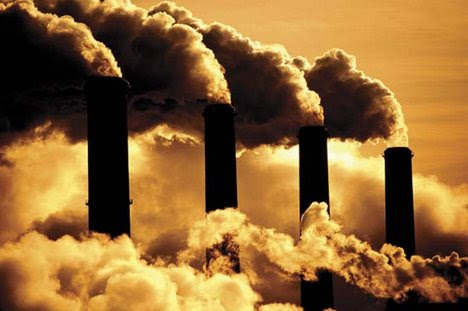
By Damien Brockmann
Earlier this month, the Supreme Court upheld EPA regulations that could have implications for the Lone Star state. From our Beyond Coal Team, here's a rundown of what's happening with Cross-State Air Pollution rules and what we can expect.
Background on CSAPR Rule
The Cross State Air Pollution Rule (“CSAPR”) was created in 2011 to address longstanding problems with states failing to achieve attainment of smog (ozone) and fine particulate matter due to pollution blowing in from upwind states. Each state has an obligation to generate State Implementation Plans, or SIPs, that not only address air quality within their own borders but also, under the “Good Neighbor” provisions of the Clean Air Act, ensure that they do not significantly contribute to nonattainment in other states. Since many states failed to have adequate SIPs, many downwind states (and to some extent groups like the Sierra Club) petitioned the EPA to programatically resolve these problems with interstate transport of air pollutants. In response, the EPA proposed to do a Federal Implementation Plan to resolve the issue and help downwind states meet those health-based standards. The first iteration of EPA’s plan, the Clean Air Interstate Rule (“CAIR”), was rejected by the DC Circuit. EPA went back to the drawing board and did CSAPR. The DC Circuit Court initially rejected CSAPR as well. But the Supreme Court overturned the DC Circuit Court, upholding the rule.
So what is CSAPR supposed to do?
CSAPR set out allowable pollution levels for power plants in each affected state for two different pollutants over certain periods of times: 1) Annual SO2 pollution, 2) Annual NOx pollution, and 3) Ozone Season (roughly May to August) NOx pollution. Each state, and actually each plant within the state, received those levels based on both how much they were contributing to nonattainment areas and how much it would cost to get those reductions.
So what did the Supreme Court decision mean as a matter of law?
The Supreme Court upheld EPA’s authority to implement CSAPR and to base allowable pollution levels on both the level of contribution to nonattainment areas and the cost of pollution reductions. In other words, the entire structure of the rule was upheld. The Supreme Court did note that individual states could challenge their allowable pollution levels on the basis that they were no longer significantly contributing to ANY nonattainment areas, but that demonstration and challenge should not affect the entire structure of the rule. The Supreme Court remanded the rule back to the DC Circuit.
So what does this mean in practice for Texas?
EPA has not indicated how they intend to proceed. Under CSAPR, states were supposed to start complying with their longer term reductions this year. But the rule has been stayed two years thus far. Some of the nonattainment areas that the rule was originally designed for are no longer in nonattainment. We should have more visibility on what EPA is going to do in the next few weeks. In the meantime, we do know a few things:
1) There are 6 states that had annual SO2 pollution levels in 2013 that were SIGNIFICANTLY above their required 2014 and beyond budgets: Indiana, Kentucky, Michigan, Ohio, Pennsylvania, and Texas. Illinois, West Virginia, and Wisconsin were also slightly higher than their requirements.
2) There are 9 states that had annual NOx pollution levels in 2013 that were higher than their required 2014 and beyond budgets: Illinois, Kentucky, Michigan, Missouri, Nebraska, New York, Ohio, Pennsylvania, and West Virginia.
If EPA were to reinstate the rule, and push it up back by two years to accommodate the legal stay, those are the states that would likely be impacted. However some of those states could be significantly reducing their SO2 pollution levels by 2016 due to federal Mercury and Air Toxics Standards compliance and other factors, including retirements. So while eventually it is likely that all of those states will need to reduce SO2 and NOx pollution, they may actually already be on track to do that. Over the next few weeks our analyst team will be trying to estimate where each of those states will be on SO2 and/or NOx by 2016 to see if we would expect any states to need to do significantly more than they are already on track to do.
What else does this mean?
It is actually a pretty big deal, because the Supreme Court upheld the EPA’s authority and process (for the most part), which will come into play for other standards, including the 2008 smog (ozone) standard and an upcoming 2015 smog (ozone) standard. So stay tuned!